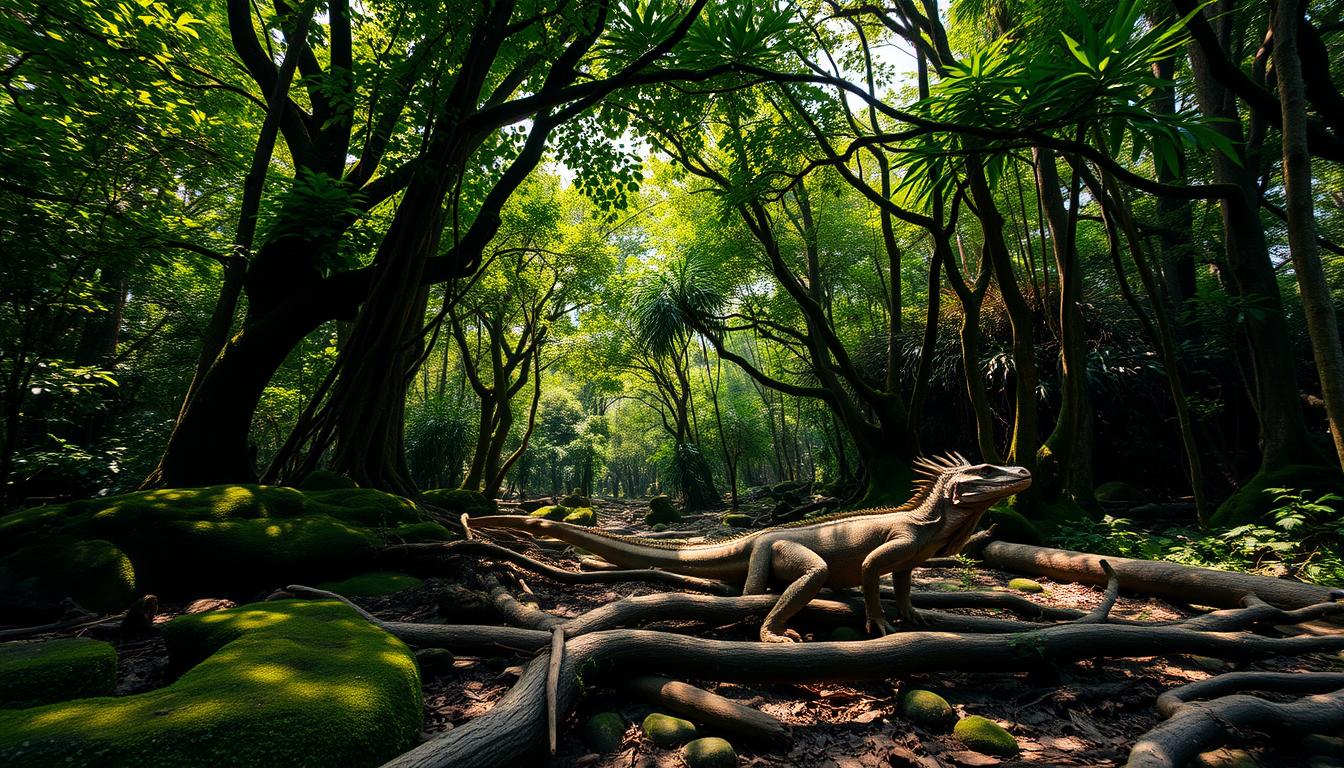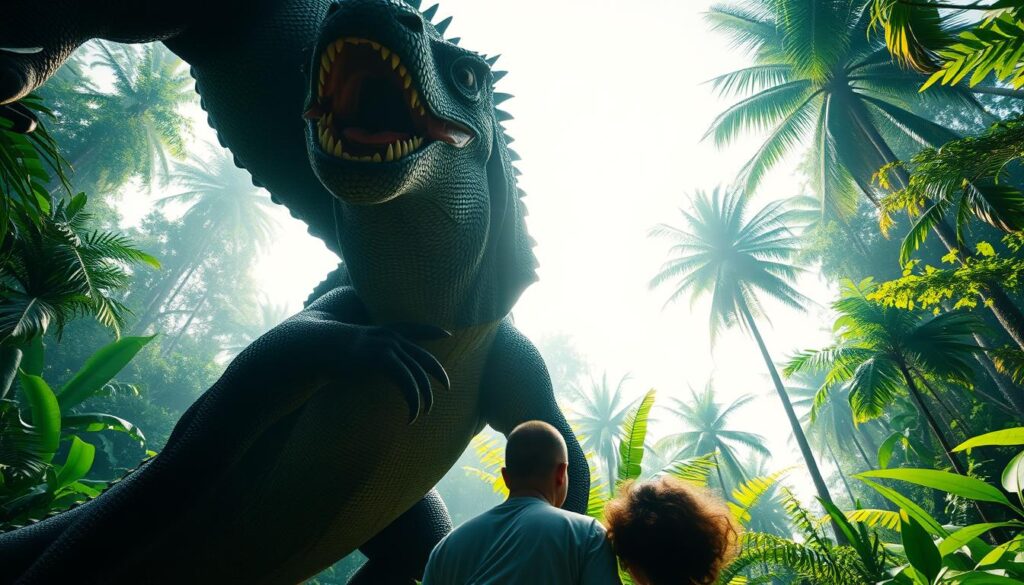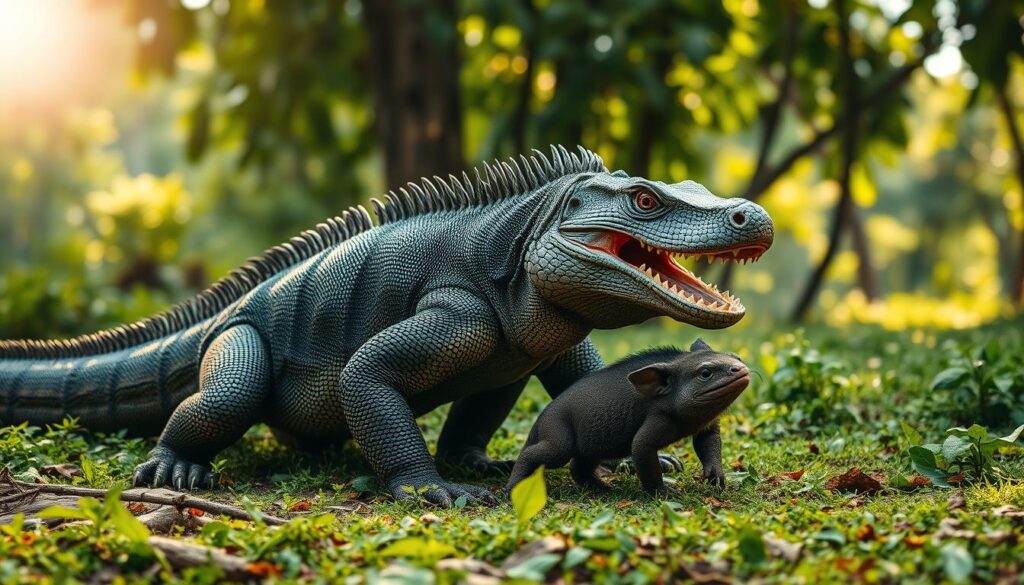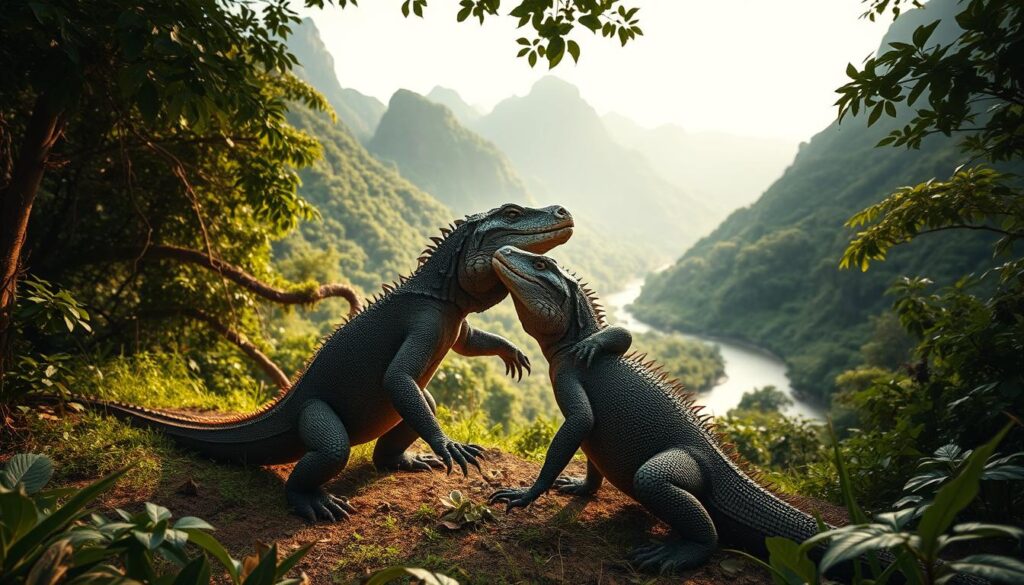Now Reading: How Komodo Works: A Comprehensive Guide
- 01
How Komodo Works: A Comprehensive Guide
How Komodo Works: A Comprehensive Guide

The Komodo dragon reigns as the largest living lizard species, a title earned through its unmatched size and predatory dominance. Found exclusively on five Indonesian islands, these reptiles have evolved to thrive in harsh island environments. Their venomous bite and acute senses make them apex hunters, capable of taking down prey much larger than themselves.
These remarkable creatures rely on specialized adaptations to survive. Forked tongues detect chemical signals in the air, allowing them to locate carcasses or live targets from miles away. Unlike most predators, they balance hunting and scavenging roles, maintaining ecological equilibrium across their island territories.
Physical endurance plays a critical role in their success. Komodo dragons can swim between islands, expanding their hunting grounds and genetic diversity. Their armored skin resists injuries during territorial disputes, while efficient metabolisms let them survive on sparse meals for weeks.
Key Takeaways
- Komodo dragons are the world’s largest lizards, found only on five Indonesian islands
- Venomous bites and advanced sensory systems make them apex predators
- Forked tongues detect prey up to several miles away
- Unique adaptations include island-hopping swimming abilities
- They maintain ecological balance through hunting and scavenging
Understanding Komodo Dragons: The Real-Life ‘Dragons’
While fairy tales depict dragons as mythical beasts, Komodo dragons bring that legend to life. These astonishing reptiles boast leathery armor-like skin, serrated teeth, and claws capable of tearing through tough hides. Adults average 154 pounds – heavier than most humans – with record-breaking specimens exceeding 10 feet long. 
Three features cement their dragon-like reputation:
- Unmatched size: They dwarf 99% of lizard species
- Venomous arsenal: Bites cause shock and blood loss
- Prehistoric appearance: Rugged scales and muscular frames
Unlike storybook creatures, these animals dominate through evolutionary adaptations. Their forked tongues detect decaying flesh from 6 miles away, while low-energy lifestyles let them survive months between meals. Fossil records show their ancestors roamed Australia before evolving into island specialists.
The largest verified Komodo dragon weighed 366 pounds – equivalent to a full-grown panda. This staggering size allows them to hunt deer, buffalo, and occasionally humans. Yet despite their power, they face habitat loss and climate threats like true relics of a bygone era.
Modern science confirms what island folklore long suggested: dragons walk among us. Through millions of years of refinement, these reptiles became nature’s perfect blend of predator and survivor – no magic required.
Anatomy and Adaptations of Komodo Dragons
Behind the Komodo dragon’s fearsome reputation lies a suite of specialized adaptations. These reptiles combine rugged physical traits with biochemical weapons, creating one of nature’s most efficient predators. Each feature—from armored skin to toxin-producing glands—serves specific survival functions honed over millennia.
Thick Skin, Sharp Teeth, and Powerful Claws
Komodo dragons wear nature’s armor: layered scales protect against scrapes and bites. Their thick skin deflects thorns and rivals’ claws during territorial fights. Young dragons climb trees using powerful claws, escaping larger predators until adulthood.
The sharp teeth of these predators act like steak knives. Curved and serrated, they slice through flesh while anchoring prey. Unlike mammals, they replace broken teeth frequently—ensuring constant cutting power. Each bite leaves deep wounds, weakening targets through blood loss and infection.
Venom and Bacterial Saliva Mechanisms
Beyond physical weapons, Komodo dragons deploy biochemical warfare. Venom glands in their jaws inject toxins that disrupt blood clotting. Prey animals experience rapid blood loss and shock, collapsing within hours.
Their saliva hosts over 50 strains of harmful bacteria. Even escaped victims succumb to septicemia, turning every bite into a delayed death sentence. Researchers studying these mechanisms follow strict safety protocols to avoid dangerous encounters. This dual attack strategy—venom and infection—ensures minimal energy expenditure for maximum hunting success.
How Komodo Works: Hunting Strategies and Prey Dynamics
Hunting strategies evolve dramatically as Komodo dragons grow from juveniles to adults. Youngsters sharpen skills on insects and small reptiles, perfecting strikes through trial and error. This foundational phase prepares them for larger challenges.

Adults employ calculated ambushes against deer and water buffalo. They stalk silently for hours, striking when prey least expects. A single bite delivers venom and bacteria, triggering severe blood loss and shock. Victims rarely escape the compound assault.
These predators balance fresh kills with scavenged meat. Their role as ecosystem cleaners prevents disease spread from rotting carcasses. Studies detailed in apex predator research confirm their vital ecological impact.
The violent head-shaking technique maximizes tissue damage. This motion tears wounds wider, accelerating blood loss until prey collapses. Adult dragons track escaping animals for miles using keen smell.
Dietary preferences shift completely with maturity:
- Hatchlings: 70% insects/small reptiles
- Adults: 85% large prey mammals (deer, water buffalo)
This opportunistic feeding strategy minimizes energy expenditure while securing calories. Whether consuming fresh meat or carrion, these reptiles exemplify nature’s survival blueprint – weakening prey through blood loss before claiming their prize.
Reproductive Strategies and Parthenogenesis
Nature equipped Komodo dragons with two survival blueprints: sexual reproduction and virgin births. This dual approach helps maintain population numbers across isolated islands. 
Traditional Mating vs. Asexual Reproduction
Mating season sparks intense competition among male dragons. Dominant males perform ritualistic fights, slamming tails and bodies to win breeding rights. Successful pairs retreat to secluded areas where females later dig nests up to 9 feet wide.
Scientists made a groundbreaking discovery in 2006: some females produce fertile eggs without mating. This asexual reproduction, called parthenogenesis, creates genetic clones of the mother. While rare, it explains how isolated females establish new populations.
Three key reproductive facts:
- Clutches contain 15-30 leathery eggs
- Incubation lasts 8-9 months
- Hatchlings face 80% mortality rates
Newborn dragons measure 16 inches and weigh less than a smartphone. For 3-5 years, they live in trees to avoid cannibalistic adults. Only when reaching 4 feet long do they safely descend, completing nature’s most dangerous coming-of-age story.
This reproductive flexibility places Komodo dragons among elite animal species like whiptail lizards and sawfish. Through both traditional and unconventional methods, they defy extinction odds in challenging environments.
Habitat and Geographic Distribution
Nestled within Indonesia’s archipelago lies a unique ecosystem where Komodo dragons rule unchallenged. These reptiles survive only in isolated pockets of wilderness, their existence tied to specific environmental conditions found nowhere else on Earth.
Indonesian Islands and Natural Environments
In the wild, these giants occupy just five islands: Komodo, Rinca, Flores, Gili Motang, and Padar. The largest population thrives on Komodo Island itself – a 22-mile-long sanctuary of tropical forests and sun-baked savannas. This rugged landscape provides perfect hunting grounds and nesting sites.
Komodo National Park protects nearly 700 square miles of critical habitat across these islands. Established in 1980, the park safeguards not just dragons but entire ecosystems. Rangers monitor populations while balancing tourism with conservation needs.
Three key factors define their island homes:
- Dry tropical forests with seasonal water sources
- Coastal grasslands offering clear sightlines
- Elevated volcanic terrain for temperature regulation
Young dragons often climb trees in dense woodland areas, while adults patrol open places where large prey graze. The national park’s varied terrain allows different age groups to coexist without competition – a delicate balance maintained through strict habitat protection measures.
Interactions with the Ecosystem and Conservation Efforts
As natural custodians of their island ecosystems, Komodo dragons perform dual roles that shape entire food chains. These apex predators regulate populations of deer, wild boars, and smaller animals, while their scavenging habits clean landscapes of disease-ridden carcasses.
Fewer than 1,400 individuals remain across their limited range. Rising sea levels threaten to erase 30% of their habitat by 2100. Human expansion compounds the crisis, reducing prey availability and fragmenting nesting grounds.
Three critical conservation challenges:
- Coastal erosion swallowing critical hunting zones
- Illegal deer hunting shrinking food supplies
- Genetic bottlenecks from isolated populations
Protecting these reptiles creates ripple effects. Birds benefit from reduced carrion contamination, while snakes thrive in balanced predator-prey dynamics. Strategic conservation programs now focus on habitat corridors and community education to address multiple threats.
Scientists warn that losing Komodo dragons would destabilize entire island ecosystems. Their survival depends on global climate action and localized protection measures working in tandem. Each preserved nest and guarded coastline helps maintain the fragile web of life in Indonesia’s vanishing wild spaces.
Human Encounters and Safety Considerations
Encounters between humans and Komodo dragons carry inherent risks few predators match. Though their bite force ranks below crocodilians, these dragons compensate with razor-sharp teeth capable of slicing through muscle and tendon. A single swipe from their curved claws can leave deep lacerations, turning defensive actions into life-threatening emergencies.
Escaping an attack offers no guarantee of survival. The Komodo dragon’s saliva introduces bacteria into wounds, while venom prevents blood clotting. Even water buffalo – animals 10 times their size – often collapse days later from infections. This delayed fatality makes every encounter potentially lethal.
Visitors to dragon habitats should maintain 30+ feet of distance. Rangers recommend hiking in groups and avoiding sudden movements. Never approach nesting sites – protective mothers defend territories aggressively. Respecting these guidelines helps preserve both human safety and the dragon’s natural behaviors.
FAQ
Why are Komodo dragons called “real-life dragons”?
Komodo dragons resemble mythical dragons due to their massive size (up to 10 feet long), armored scales, and predatory behavior. Found only on Indonesian islands like Komodo and Rinca, they dominate their ecosystems as apex predators.
Do Komodo dragons use venom or bacteria to kill prey?
Both. While their saliva contains harmful bacteria, recent studies confirm they also inject venom through serrated teeth. This venom disrupts blood clotting and causes shock, speeding up prey death after ambush attacks.
How do Komodo dragons hunt animals larger than themselves?
They ambush prey like deer or water buffalo, delivering deep bites. Venom and bacteria weaken the target over hours or days. Their strong sense of smell lets them track fleeing prey until it collapses from blood loss or infection.
Can Komodo dragons reproduce without males?
Yes. Through parthenogenesis, females can lay fertile eggs without mating. This rare trait, seen in species like some snakes, helps populations survive in isolated environments like Komodo National Park.
Where do Komodo dragons live in the wild?
They inhabit dry tropical forests and savannas on Indonesian islands, including Komodo, Rinca, Flores, and Gili Motang. Conservation efforts in Komodo National Park protect critical habitats from human encroachment.
What threats do Komodo dragons face today?
Habitat loss, poaching, and climate change threaten their survival. Organizations like the Smithsonian’s National Zoo support breeding programs and research to combat declining populations.
Are Komodo dragons dangerous to humans?
Attacks are rare but possible. Their sharp teeth and venom make bites lethal if untreated. Visitors to Komodo National Park must stay with guides and avoid sudden movements near these reptiles.













